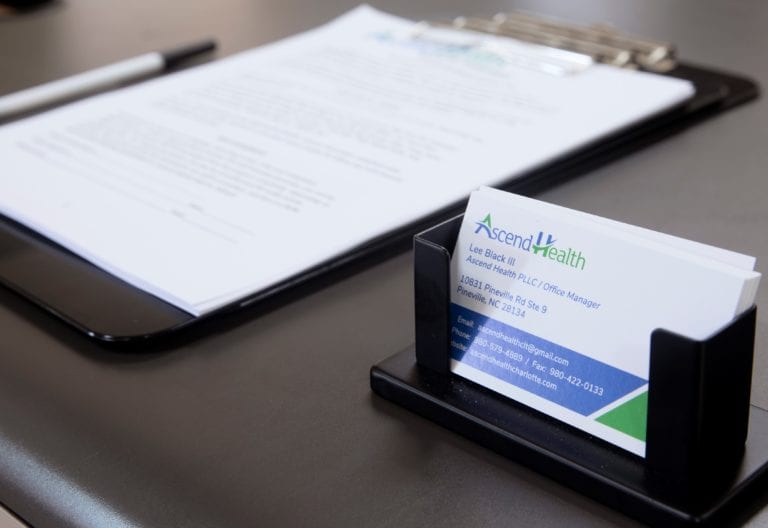Understanding your outpatient program
If you’ve completed detox or inpatient rehab, enrolling in a suboxone outpatient recovery program can help you transition back into daily life while maintaining stability and focus on relapse prevention. This model combines medication-assisted treatment with counseling and support services, allowing you to manage cravings without the need for round-the-clock supervision. As a result, you gain the flexibility to rebuild routines, maintain work or school commitments, and reinforce healthy habits outside a residential setting.
Outpatient care offers different levels of intensity, from standard weekly visits to intensive outpatient programming. You may choose a suboxone maintenance therapy outpatient program that fits your schedule and recovery goals. Understanding these options is the first step toward crafting a personalized aftercare plan that supports long-term wellness.
What is suboxone maintenance?
Suboxone combines buprenorphine, a partial opioid agonist, with naloxone, an antagonist that deters misuse. Buprenorphine binds to brain receptors to reduce withdrawal and cravings without causing the full “high” of opioids [1]. Naloxone remains inactive when taken as prescribed but triggers withdrawal if injected, discouraging diversion. Together, these components create a safe, effective maintenance therapy.
Key properties of buprenorphine and naloxone:
- Buprenorphine ceiling effect limits respiratory depression risk [2]
- Combination reduces misuse and overdose potential
- Long half-life (24–42 hours) ensures stable blood levels [3]
How outpatient differs from inpatient
Unlike inpatient programs, outpatient care does not require a residential stay. You attend scheduled visits for medication management and therapy, then return to your home environment. This structure:
- Encourages real-world application of coping strategies
- Supports family involvement in treatment
- Minimizes disruption to employment or education
- Reduces program costs and co-payment burdens
With outpatient care, you remain connected to your support network daily while benefiting from professional guidance during clinic visits. This balance of independence and accountability helps you reinforce relapse prevention skills in the settings where they matter most.
Exploring program benefits
Participating in an outpatient approach offers unique advantages that reinforce recovery and quality of life. Understanding these benefits can help you choose the right path forward.
Managing cravings and withdrawal
Outpatient buprenorphine treatment lets you taper into the correct dose during an induction phase, then stabilize at a level that minimizes discomfort. As you adjust:
- A clinician monitors your withdrawal symptoms and cravings
- Dosage is modified based on your feedback and clinical markers
- You experience fewer highs and lows, allowing clearer focus on therapy and daily tasks [4]
Steady medication levels reduce the temptation to self-medicate, lowering relapse risk by approximately 50% compared to no medication-assisted treatment [2].
Flexible scheduling and normalcy
Outpatient programs respect your existing commitments. You may attend:
- Morning group counseling before work
- Evening individual therapy after school
- Weekend peer support meetings
This flexibility helps you maintain employment, caregiving duties, and social obligations, all while progressing in recovery. For busy or working adults, telehealth can further enhance convenience through a telehealth suboxone maintenance program that delivers remote check-ins and prescription management.
Reduced overdose risk
Medication-assisted treatment is proven to lower the risk of fatal overdose by nearly half when combined with psychosocial support [2]. With consistent outpatient visits, your provider can:
- Screen for emerging risks
- Adjust your dose proactively
- Educate you on safe use and warning signs
This protective framework boosts safety, giving you greater confidence as you rebuild your life.
Tailoring your treatment plan
A successful recovery path addresses both biological and psychosocial factors. Your outpatient care plan should integrate medication, therapy, and supportive services that meet your unique needs.
Induction and stabilization phases
Your journey begins with an induction phase, usually 12 to 24 hours after your last opioid use once withdrawal signs appear [1]. During this phase:
- Providers determine your starting dose
- You report withdrawal severity
- Clinicians adjust dosing until symptoms dissipate
After induction comes stabilization. You attend regular visits to:
- Confirm maintenance dose
- Monitor side effects
- Assess liver function and vital signs [4]
This phased approach ensures you remain comfortable and engaged in therapy.
Integrating counseling and therapy
Medication forms the backbone of your care, but counseling builds resilience. Outpatient programs often offer a mix of:
- Individual therapy
- Group counseling
- Family sessions
These services work together to address triggers, coping skills, and interpersonal dynamics. You might enroll in an aftercare suboxone treatment program that emphasizes relapse prevention through cognitive behavioral therapy and motivational interviewing.
Individual and group therapy
Individual sessions let you explore personal challenges one-on-one, while group settings foster peer support and shared accountability. Benefits include:
- Personalized goal setting
- Exposure to diverse recovery experiences
- Development of social skills in a safe environment
Family support
Involving loved ones can strengthen your recovery network. Family therapy educates relatives on addiction as a disease, teaches communication strategies, and helps rebuild trust. An outpatient mat with family therapy option ensures your support system stays aligned with your treatment goals.
Incorporating relapse prevention
Even with effective medication, relapse prevention strategies are crucial. Outpatient care integrates ongoing support to help you anticipate and manage high-risk situations.
Counseling strategies
Evidence-based approaches, such as cognitive behavioral therapy and dialectical behavior therapy, teach you to:
- Identify triggers and warning signs
- Challenge unhelpful thought patterns
- Develop healthy coping mechanisms
Working with therapists, you build a personalized relapse prevention plan that guides you through stressful events and cravings.
Medication-assisted relapse prevention
Continuing buprenorphine under supervision is itself a relapse prevention measure. Some programs offer extended-release options that simplify dosing:
| Treatment type | Dosing schedule | Advantages |
|---|---|---|
| Daily sublingual film | Every day under tongue | Direct dosage control, easy dose adjustments |
| Monthly injectable | Once every 28 days | Improved adherence, reduced diversion risk |
Extended-release treatments, like Sublocade, provide a constant buprenorphine level. You can learn more about coverage through sublocade treatment with insurance coverage.
Ongoing peer support
Joining recovery groups, either in person or online, keeps you connected to peers who understand your journey. Regular check-ins reinforce accountability and offer encouragement during challenging periods. For remote access, consider telehealth relapse prevention mat services that incorporate virtual peer meetings and counseling.
Utilizing telehealth services
Telehealth delivers outpatient care directly to your home, making recovery support more accessible and less disruptive.
Benefits of remote care
Virtual visits allow you to:
- Save commuting time and costs
- Schedule appointments around work or school
- Receive care if you live in rural areas
Providers can conduct assessments, adjust medication, and deliver therapy via secure video platforms. This model encourages continuity of care, especially during inclement weather or public health emergencies.
Accessibility and convenience
Telehealth expands program availability for diverse populations:
- Students balancing classes and recovery
- Parents managing childcare and appointments
- Individuals with mobility or transportation challenges
An integrated telehealth opioid treatment with suboxone option ensures you never miss a critical dose or therapy session.
Comparing suboxone and sublocade
Understanding the differences between daily and extended-release treatments helps you choose the best path.
Daily dosing versus extended-release
| Feature | Sublingual Suboxone | Monthly Sublocade |
|---|---|---|
| Dosing frequency | Daily | Every 28 days |
| Flexibility in dose adjustment | High | Moderate |
| Adherence monitoring | Clinic or pharmacy visits | Injection in clinical setting |
| Diversion risk | Higher without monitoring | Lower due to clinician admin |
Daily dosing offers more granular control, while monthly injections reduce the chance of missed doses or diversion. Your clinician can guide you toward the ideal choice based on lifestyle, stability, and relapse history.
Insurance coverage considerations
Both treatments are typically covered under MAT benefits, but formularies and prior authorization requirements vary. To explore options, review plans under an insurance covered outpatient recovery program or consult Medicaid providers at an outpatient opioid program that takes medicaid.
Navigating coverage and costs
Concerns about affordability should not deter you from seeking care. Various funding streams and clinics cater to different financial needs.
Insurance and Medicaid options
Most private insurers cover medication-assisted treatment, including suboxone and related counseling. In addition:
- Medicaid covers outpatient MAT in many states
- Veterans may access services at a veteran opioid treatment program
- Some employers offer EAP support for addiction treatment
If you lack insurance, ask about sliding-scale fees or nonprofit clinics that provide low-cost care.
Financial assistance programs
Manufacturer assistance programs can help cover out-of-pocket drug costs. Local community health centers and SAMHSA-funded clinics may also offer subsidized care. Investigating these resources can reduce financial strain and ensure uninterrupted access to treatment.
Embracing comprehensive aftercare
Long-term success relies on a continuum of care that evolves with your needs. Ascend Health’s aftercare continuum exemplifies this approach by integrating medication maintenance, relapse prevention therapy, and supportive services under one umbrella.
Ascend Health’s aftercare continuum
Ascend Health provides:
- Ongoing medication management
- Structured relapse prevention workshops
- Peer support communities
- Case management for housing, employment, and legal needs
This holistic model ensures you have the tools and resources necessary to maintain sobriety and rebuild your life.
Dual diagnosis and ongoing support
If you face co-occurring mental health conditions, a dual diagnosis mat program offers integrated treatment for both addiction and mental illness. Coordinated care reduces fragmentation and improves outcomes by addressing all aspects of your health.
Specialized tracks
Beyond standard outpatient care, you might benefit from:
- Outpatient buprenorphine treatment program for tailored dosing
- Outpatient opioid rehab with suboxone emphasizing group therapy
- Suboxone clinic for long-term recovery that supports you through life transitions
These options ensure your aftercare plan remains aligned with evolving goals and circumstances.
Achieving long-term recovery
Sustaining recovery extends beyond medication and therapy. By setting goals, building support systems, and tracking progress, you create a foundation for lasting wellness.
Setting realistic goals
Break down recovery into manageable milestones:
- Maintain consistent medication adherence
- Attend all scheduled therapy sessions
- Reestablish healthy routines—exercise, nutrition, sleep
- Explore new hobbies and social activities
Celebrating each achievement reinforces motivation and self-efficacy.
Building a support network
Your recovery network may include:
- Family and friends educated on your treatment plan
- Peers from group counseling or recovery meetings
- A case manager or sponsor for accountability
Regular contact with supportive individuals mitigates isolation and strengthens resilience.
Monitoring your progress
Ongoing assessments—both self-evaluations and clinical check-ins—help you identify emerging challenges early. Use recovery journals, tracking apps, or weekly clinician reviews to stay on course. If setbacks occur, adjust your plan collaboratively with your provider to reengage in care promptly.
Conclusion and next steps
Choosing an outpatient approach for medication-assisted opioid recovery empowers you to balance treatment with daily life. With a suboxone outpatient recovery program, you gain comprehensive support: flexible medication management, tailored counseling, relapse prevention strategies, and a robust aftercare continuum through Ascend Health. Whether you opt for daily dosing or extended-release injections, telehealth or in-person visits, a personalized plan ensures you have the resources and guidance needed for lasting sobriety.
Explore our full suite of services—from relapse prevention mat treatment to outpatient mat with family therapy—and take the next step toward a healthier, more fulfilling future.



